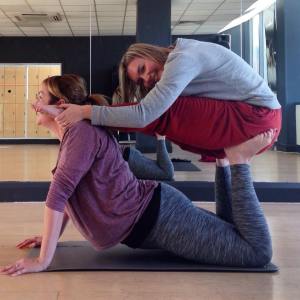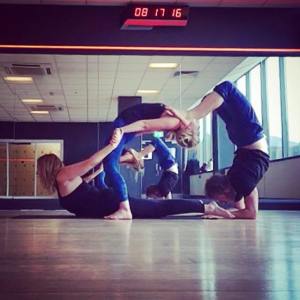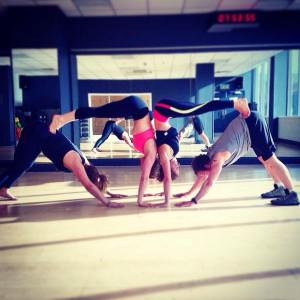“All you have to do is count up to ten, and you’ll find that whatever’s frightening you isn’t so quite so frightening after all”… the Tramp’s advice to Mr Jelly
Roger Hargreaves
 Having had a hectic few weeks at work my colleague presented me with a book, Mr Jelly, from the Mr Men series. It felt like I had forever been chasing my tail with clashing deadlines, like so many of us are, and upon giving it to me, he said “my daughter says you just have to learn to breathe like Mr Jelly, she said you can borrow her book”. Curiously I had a quick read and discovered that I had forgotten what I had read as a child and the relaxation tips that I share with my clients. This book’s key message is that by counting and breathing we can create a sense of calm which is key to managing stress.
Having had a hectic few weeks at work my colleague presented me with a book, Mr Jelly, from the Mr Men series. It felt like I had forever been chasing my tail with clashing deadlines, like so many of us are, and upon giving it to me, he said “my daughter says you just have to learn to breathe like Mr Jelly, she said you can borrow her book”. Curiously I had a quick read and discovered that I had forgotten what I had read as a child and the relaxation tips that I share with my clients. This book’s key message is that by counting and breathing we can create a sense of calm which is key to managing stress.
In the book. Mr Jelly begins to count each time he panics or feels scared. Every time this happens he begins to use his new counting technique. As he does, he realises that by taking the time to focus through counting, he no longer feels frightened of what he originally perceived to be a threat.
In our everyday lives it is easy to feel overwhelmed, managing multiple responsibilities at home and work, being contacted via various social media channels as well as by traditional phone and email, cooking the right food and doing enough exercise. Sometimes it can feel like our minds just don’t have any more spare capacity to deal with all these demands and we start to feel understandably anxious and on edge.
Breathing for health
We can use breathing techniques to calm our minds but they’re actually really good for keeping our bodies well. When we feel stressed and anxious we activate our stress response (also known as fight or flight), which hijacks our nervous system, flooding it with cortisol – the stress hormone. The problem with this is that all of our key organs and systems within our body are managed by our nervous system. The usual functioning of our bodies stop when we activate the stress response because the body is going on stand-by and switching to its survival mechanism; all the blood rushes away from your organs to your muscles to help you fight or flight even though this isn’t actually required. This is ok now and then, but frequent activation of this kind of response can lead to chronic health issues overtime.
Breathing to balance the body
In our body we have the sympathetic function and the parasympathetic function. The sympathetic function is responsible for the stress response which fires up when our brain thinks we need to take action urgently. To turn this off we have to learn to activate the parasympathetic function which enables us to relax. We can kick-start the relaxation response through deep breathing from our tummies and taking long breaths in and out.
7/ 11 breathing
Its not the nicotine that relaxers a smoker, it’s the breath. If you watch a smoker, you’ll notice that their exhale is always longer than their inhale and through doing so they are activating their relaxation response. How often have you heard a smoker say, “I feel so much better now” or “I feel so much calmer for having that cigarette” – now you know why.
The inhale exhale technique that smokers use is the same as 7/11 breathing. I learned this during my training to be a hypnotherapist to help my clients relax and soothingly transition into a relaxing trance state.
This is how you breathe to bring about a sense of calm and space:
- Breathe in for 7
- Breathe out for 11
- As you do, focus on breathing in from your belly and exhaling all the way out
- Focus on your breath by imagining it has a colour to it, I like to use a golden, warming sunshine yellow or sometimes a cooling blue colour with my clients.
- Alternatively you can imagine a picturesque scene, maybe a beautiful place you’ve visited, and just imagine relaxing there.
- After 3-4 minutes you should really notice the difference in yourself and how much calmer and clear headed you feel.
If the count of 7/11 feels too long you can shorten it, just make sure the out breath is longer than the inhale i.e 5/9.
Heart Math
- Place your hand on your heart and focus your attention on your heart and the area around it.
- Start to take deep belly breaths for 5 to 6 seconds both on the inhale and exhale and eventually you’ll find your heart’s natural rhythm.
- After a few rounds start to visualise something happy like a fond memory of family and friends. Focus on breathing that memory into your heart and back out again into the world or to the people you are thinking of.
- Focus on breathing that love in to your heart and back out again.
- Continue to breath in this way for 5-6 minutes. Notice how much happier and positive you feel afterwards.
This kind of breathing not only activates the relaxation response, it also sends powerful signals to our brain that we are ok and helps us to feel happy. Getting to know our own heart rhythm by regularly practicing Heart Math breathing can support our brain to function more efficiently, improving our creativity, intuition and decision making skills.
You can find out more about Heart Math here.
If there is one thing we were all born to do – it’s breathe. It’s the body’s built in healing mechanism and these two techniques are really simple and very effective. The bonus is that you can use them pretty much anywhere whether it’s on public transport, in the office or at home.
Give them a try and let me know what you think,
Hx



